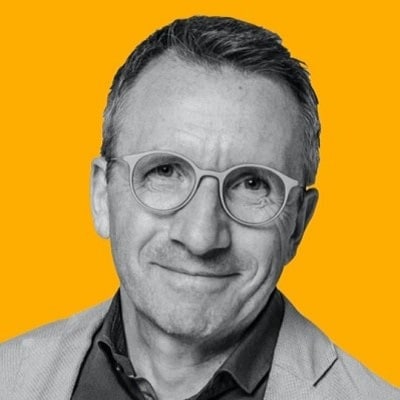The PARIS model in service
Service is not just about waiting tables in restaurants, nor is it just about support for machinery and equipment. Service is all things that people do in order to support others, and therefore services happen in all industries, in all places, everywhere. Everything is a Service!
The turnover and profit potential of services is often underestimated. In my many years as a management consultant, I have been able to accompany numerous investment projects, whereby the service projects were many times larger. There is a lot of potential in them and this can be actively used: with the PARIS model.
We are service users
Before entering the world of service, let’s take a brief look into the past. Do you still remember your first PC?
A technical masterpiece. VGA card, interfaces, hard disk capacity, working memory capacity, processor speed, operating system and various software installations all played a role. You had to know your way around to get the machine to work. You were half a computer scientist, half a technician, if you wanted to use a PC. Today? The PC is still a lot of technology, but actually we just use a PC service that works with cloud services and Software as a Service (SaaS). The technology behind it is still there, but it remains hidden behind the PC or cloud service. We are no longer small computer scientists, we are service users.
Change of scene. Do you remember how you used to consume music?
Maybe you started with acrylic records, maybe it was music cassettes or CDs that gave you your introduction to the world of music. You always needed a “sound carrier” and a corresponding playback device. You didn’t have to be an expert, but a little knowledge of technology was necessary to make sure that decent music came out in the end. Today? They use Apple Music, Spotify or other cloud services and listen to music by pressing a single button. Both the sound carrier and all the technology are hidden in “Music as a Service”.
Consumers, whether end customers or companies, want services. Services are the growing field of business. When one speaks of a service society, one does not mean placing some support around the product, but rather that the services become the product.
The differences between services
Service and support are difficult terms, because everyone who hears or uses the terms understands them differently. Four dimensions can be distinguished:
- First, there is the pure service or the pure service without a product: advisory services, advanced training, engineering services, project services, also operational services, medical services, etc. belong to this category.
- Services for products. This usually includes consulting, implementation and operation of the product, e.g. maintenance and support, but also further training and qualification.
- Managed services. Here the product is completely wrapped up with the service. These managed services include, for example, Netflix, IT cloud services, Spotify, Apple Music, but also car rental companies. There, too, the car is only a “means to an end”. The customer actually buys mobility.
- For all these services, there is now still a support, a customer service. The Netflix hotline, the car rental office, etc. are among them.
Many “classic products” can be thought of as “as a service” or at least upgraded with services. You just have to think a little differently. And it is precisely this new thinking that leads us to strategy.
Service as a product – the new service strategy
If one wants to achieve turnover and profit with services, then this must first be strategically anchored in the company. The “by-products” become strategic business areas.
The very first and most important strategic step is to define service products. I imagine them in a “box”. The service is “in it”. The labels on the box describe the contents. Do you have such boxes for your services? If not, that is the first step.
Ideally, these services should be developed and engineered in the same way as all other products. I call this process service architecture: a structured process to get from an idea to a service product. The service product has
- a clear description,
- defined attributes,
- defined service levels and
- and of course a price.
I also deliberately use the term product for services. Service products, once defined, should be sold and produced in the same way as material products. This is the view of the shop and the workshop. Both dimensions hang on the product. With the structuring matrix method of the service architecture¹, it is possible to take an orderly look into the workshop and the shops and recognise which processes are carried out on which objects. This quickly creates a structure that opens up the potential for improvements, optimisation and development.
Building blocks of a service – the PARIS model
And how can services be structured? With the help of five building blocks, which I abbreviate to PARIS:
- P for Processes. The essential element, both in the workshop and in the shop, are the processes. The processes for the production and for the marketing of services.
- A stands for applications. This refers to software applications that are used to support both the workshop and the shop. Online marketing processes are particularly important today, and can represent the A in a service provider’s shop, for example.
- R stands for resources. In my case, the R is differentiated again into financial resources, employees, knowledge and material resources. In order to provide services, people are needed who, of course, also have to be paid and remunerated, they bring knowledge with them or have to acquire it, and they need material resources to do their job.
- I stands for infrastructures. These are all the facilities such as workshops, practices, shops, but also vehicles and tools that are necessary to provide the service.
- S stands for steering. Or, thought of a little more broadly, management. From the beginning, it should be defined which key figures characterise a successful service, which times, which Euro amounts, which resource consumption, which qualitative criteria are necessary to identify a successful service as such. Service management, service control is summarised under the S of my PARIS model.
There is one special feature of services that I have not yet mentioned: usually, services cannot be stored. They are only ever “produced” when they are ordered. The PARIS model with its structured approach also offers useful services for this.
Conclusion
We live in a service society where it makes sense to look at and develop services like products. For me, the service product is the linchpin of the service business. The more intensively it is anchored in the corporate strategy, the more the company positions itself as a “service provider” or service company. This is where the PARIS model helps as a method for the structured development of a service architecture. It lays the foundation for successful selling and also helps with the scaling of services. The prerequisite, however, is that all five building blocks are fully thought through from the beginning.
Remember: there is a lot of potential in service. And maybe your company will soon be saying: Everything is a Service!
Notes:
[1] Heiko Roessel has published a German book on service architecture that is well worth reading, in which he describes all the necessary measures and fields of action in service engineering. It is called: Mehr Erfolg durch professionellen Service.
Heiko Roessel has published another article in the t2informatik Blog:

Heiko Roessel
Heiko Roessel is an entrepreneur and systemic management consultant. His focus is on the productisation of services and service positioning. He is a lecturer for service management at the HTW in Aalen. Through his vita, Roessel combines theory, methodology and experience.

